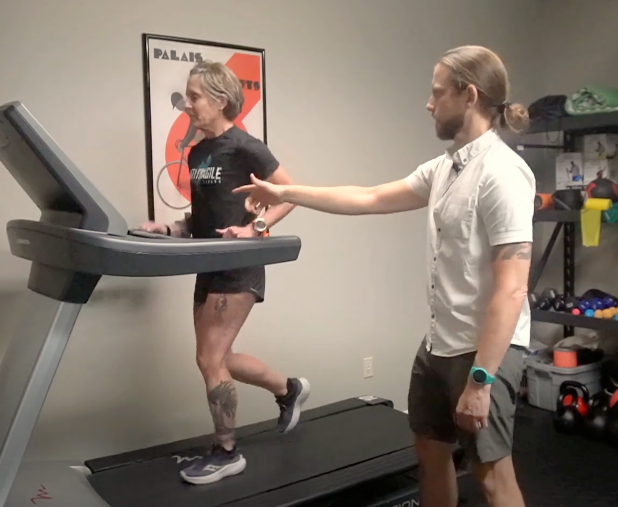5 Common Running Form Mistakes That Lead to Injury (And How to Fix Them)
- Dr. Annie Barnes, DPT, OCS

- Aug 8
- 3 min read
Updated: Aug 12
Runners are no strangers to injury—shin splints, knee pain, hip discomfort, and tight calves seem almost inevitable. But they don’t have to be. The truth is, many running injuries can be traced back to form flaws and inefficient movement patterns that place too much load on tissues over time.
At AntiFragile Physical Therapy in Asheville, we help runners identify and correct the subtle gait issues that often go unnoticed—until pain shows up. Here’s what every runner should know about how form affects injury risk—and how to run smarter, not harder.

Why Efficient Running Form Matters
According to the research-based model from the article “A Framework for the Etiology of Running-Related Injuries,” most injuries happen when the load on a specific structure (muscle, tendon, joint, etc.) exceeds its capacity to handle stress.
That "load vs. capacity" equation is affected by:
How fatigued you are when you run
How much cumulative stress you’ve placed on your body (intensity, volume, terrain)
How efficient your running form is
When your form breaks down—even slightly—you absorb and distribute force less effectively, causing certain tissues to overwork. Over time, that leads to breakdown.
Top 5 Running Form Mistakes That Lead to Injury
1. Overstriding
Landing with your foot too far ahead of your body (especially with a hard heel strike) increases braking forces and joint stress.
Common injuries: shin splints, hamstring tightness, hip pain
Fix: Increase cadence and aim for a midfoot strike closer to your center of mass.
2. Hip Drop / Knee Valgus (The “Collapser”)
Your hip drops or your knee caves in with each step, reducing stability and load absorption.
Common injuries: glute pain, medial knee pain, lower back pain
Fix: Strengthen your glutes and core, and train for single-leg control.
3. Vertical Bounce
Excessive upward movement wastes energy and increases calf and Achilles stress.
Common injuries: Achilles tendonitis, calf strains
Fix: Focus on forward drive and slight forward lean. Think “glide,” not “hop.”
4. Cross-over Gait (The “Weaver”)
Feet cross over midline while running, causing alignment and push-off issues.
Common injuries: foot/ankle pain, lateral hip pain
Fix: Train hip and core alignment; land feet under your hips—not across.
5. Poor Glute Engagement
Running too upright or leaning back limits glute activation and shifts the load to the lower back.
Common injuries: hip flexor strain, low back pain, hamstring overuse
Fix: Lean slightly forward from the ankles and strengthen your posterior chain.

How to Build Injury-Resistant Running Mechanics
Get a Professional Gait Analysis
At AntiFragile PT, our running gait analysis in Asheville includes slow-motion video, movement screening, and real-time coaching so we can identify exactly what’s breaking down and why.
Manage Your Training Load
Don’t spike mileage or intensity too quickly. Use graded progressions and monitor elevation, terrain, and rest days.
Prioritize Recovery
Your training doesn’t make you stronger—recovery does. That means:
More sleep for cellular repair and hormonal balance
Proper nutrition—especially protein and carbs to rebuild and refuel
Hydration before, during, and after running
Cross-training to strengthen the whole system without overuse
Run Smarter With AntiFragile PT
You don’t need to be sidelined every season or wonder if your pain is “just part of running.” Most runners can avoid injury and move more efficiently with the right insights and coaching.
Our physical therapists for runners are trained to uncover movement inefficiencies and build a personalized plan that supports your goals—from your first 5K to your next PR. We analyze how you are moving and figure out why you are moving this way to address the core issues.
Book your running evaluation today and let’s help you move better, recover stronger, and keep running pain-free.

Sources:












Comments